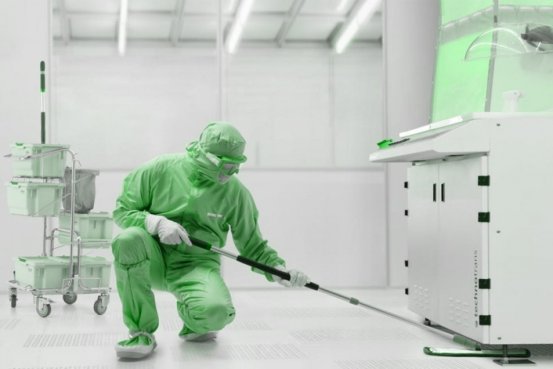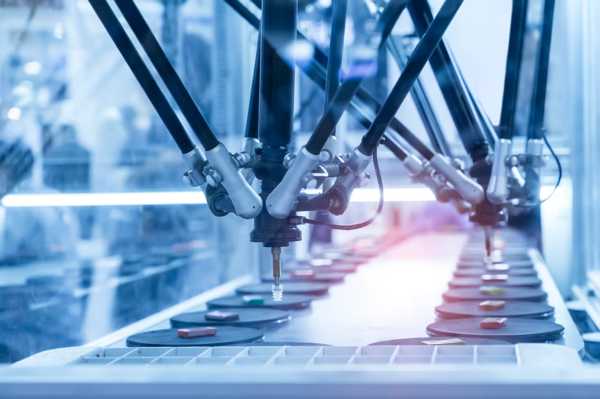Explaining the Importance of Cleanroom Services: Enhancing Precision and Safety in Controlled Environments
In sectors where even the tiniest particles can wreak havoc, cleanroom services play a crucial role. Whether it’s in the pharmaceutical sector, electronics production, or advanced manufacturing, these meticulously controlled environments are designed to maintain specific parameters. Through the use of highly advanced filtration systems and strict adherence to operational protocols, cleanrooms ensure clean air and minimize the potential for contamination, thereby guaranteeing that products meet the stringent standards expected across industries.
In sectors where even the tiniest particles can wreak havoc, cleanroom services play a crucial role. Whether it’s in the pharmaceutical sector, electronics production, or advanced manufacturing, these meticulously controlled environments are designed to maintain specific parameters. Through the use of highly advanced filtration systems and strict adherence to operational protocols, cleanrooms ensure clean air and minimize the potential for contamination, thereby guaranteeing that products meet the stringent standards expected across industries.

Understanding Cleanroom Services: An Insight
Cleanroom services involve specialized practices focused on preserving environments with minimal airborne particles and contaminants. In industries where product precision and safety are paramount, these services are indispensable. From semiconductor production and pharmaceutical manufacturing to the assembly of aerospace components, cleanroom services are vital in maintaining stringent contamination control throughout the production lifecycle.
The primary objective is to align with rigorous cleanliness standards, such as ISO benchmarks. Skilled technicians utilize sophisticated cleaning techniques, specialized chemical agents, and purpose-built tools to achieve the necessary air purity and surface cleanliness. Alongside these cleaning activities, air filtration systems play a critical role in preventing particle buildup, ensuring a contaminant-free environment.
The Significance of Cleanroom Standards
Adhering to rigorous cleanroom standards is imperative for multiple reasons. Operations in advanced manufacturing necessitate environments devoid of contaminants, which can compromise the functionality and quality of products. In the electronics industry, even the smallest particle can lead to significant defects, while in the realms of life sciences and biotechnology, contamination poses a threat to product efficacy and safety.
Moreover, maintaining a controlled environment reduces the risk of cross-contamination between various stages of production. This consistency is crucial as it helps prevent product recalls, ensures compliance with regulatory requirements, and builds customer trust. Ultimately, stringent standards are essential in safeguarding the entire production process, the final product, and the company’s reputation.
Varieties of Cleanrooms
Cleanrooms are classified according to ISO standards, defining the maximum permissible particle concentration per cubic meter. These classifications range from ISO 1, which is the most stringent, to ISO 9, the least strict. Each classification comes with specific requirements concerning cleaning, airflow systems, protective gear, and routine maintenance.
For instance:
Semiconductor cleanrooms demand extreme contamination control due to the microscopic nature of components involved.
Pharmaceutical cleanrooms necessitate absolute sterility to maintain product integrity and ensure patient safety.
Aerospace and defense cleanrooms require meticulous particulate control for precise assembly.
Comprehending these classifications is essential for selecting the appropriate cleaning protocols tailored to the unique needs of each industry.
Key Elements for Cleanroom Functionality
The successful operation of a cleanroom relies on the seamless integration of several systems. HEPA filters are instrumental in removing airborne particles while advanced air-handling units manage temperature, humidity, and pressure variations to prevent uncontrolled airflow.
Specialized cleaning products and meticulous techniques ensure that surfaces remain free of particulates without adding contamination. Every element, including floors, walls, ceilings, and workstations, undergoes regular cleaning with methods that sustain high cleanliness levels.
Ongoing maintenance, regular cleaning schedules, and continuous environmental monitoring are non-negotiable components of effective cleanroom management. The precision calibration of equipment like particle counters and airflow meters provides accurate real-time data, facilitating swift corrective action when necessary.
Effective Cleaning Protocols and Practices
Cleanroom cleaning protocols follow a detailed, systematic approach to maintain environmental integrity. Typically, the process commences with the removal of dry particles, followed by wet wiping with solutions that leave minimal or no residues.
Cleaning agents are carefully selected based on their compatibility with room materials and specific cleanliness requirements. In some scenarios, ionized water or antimicrobial treatments are applied to achieve the necessary level of sterilization. Disposable cleaning supplies are frequently used to eliminate cross-contamination risk.
Both manual cleaning and automated systems are employed, with thorough checklists ensuring no area—be it hidden or frequently contacted—is overlooked.
Personnel Training and Safety Measures
Personnel in cleanroom environments undergo extensive training on contamination prevention, safe chemical handling, and proper personal protective equipment usage. Training encompasses correct gowning procedures, entry and exit protocols, and equipment handling techniques.
Safety training also covers proper ventilation usage and protection when working with cleaning agents. Regular refresher courses and certification updates ensure that all team members stay aligned with evolving best practices and operational demands.
Applications Across Industries
Cleanroom services are indispensable in industries where contamination can lead to catastrophic failures. In semiconductor manufacturing, even a single stray particle can drastically reduce product yield and lead to defects. In pharmaceutical and medical device production, contamination could jeopardize product efficacy and put patient safety at risk.
Industries like aerospace and defense leverage cleanrooms for assembling components where impurity tolerance is minimal. Cleanroom protocols hold significance in research labs as well, where controlled environments are crucial for obtaining accurate, repeatable results.
Advancements in Cleanroom Technologies
Recent technological advancements are enhancing cleanroom efficiencies. ULPA filters are surpassing HEPA filters in terms of effectiveness. IoT-based monitoring technologies now provide continuous oversight, enabling instant environmental adjustments.
Increasingly, robotics are being deployed for repetitive cleaning tasks, minimizing human error and reducing foot traffic in sensitive areas. Moreover, novel materials featuring antimicrobial and easy-to-clean properties contribute to maintaining cleanliness with less frequent deep cleaning sessions.
Ensuring Compliance and Certification
Adhering to international standards, such as ISO classifications, is essential for obtaining credibility and regulatory approval. Routine inspections—both internal and by third-party organizations—verify that contamination levels remain within allowable limits.
Maintaining detailed documentation of cleaning schedules, monitoring results, and training records supports compliance efforts and proves pivotal during audits. High certification standards help businesses evade penalties and secure operational authorization.
Future Trends and Prospects
The field of cleanroom services will continue to evolve, keeping pace with technological advancements and stricter industry requirements. Future developments are likely to focus on sustainability, incorporating eco-friendly cleaning agents and energy-efficient climate control systems.
Increased automation, AI-driven predictive maintenance, and enhanced real-time monitoring are expected to further mitigate contamination risks while boosting operational efficiency.
In conclusion, cleanroom services form the backbone for industries that demand exceptional environmental control. By merging specialized methods, state-of-the-art technologies, and uncompromising compliance, they ensure that controlled environments consistently deliver the reliability and quality essential for modern production and research.

The Evolution of Biopharmaceutical Production: From Innovation to Impact

Shaping the Future of Knowledge Platforms with AI and Automation

AI スキルアップを目指す人のための実践ガイド:学習の始め方・重要な基礎・活用の方法

How to Spot and Prevent Financial Scams

Essential Overview of Legal Case Management Software


